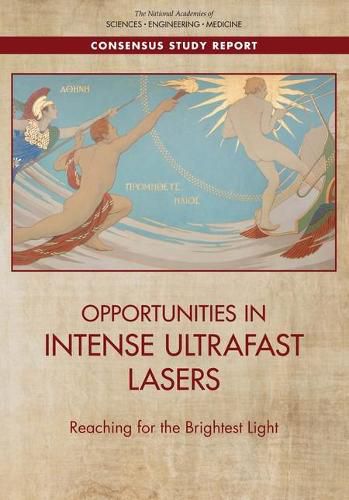Readings Newsletter
Become a Readings Member to make your shopping experience even easier.
Sign in or sign up for free!
You’re not far away from qualifying for FREE standard shipping within Australia
You’ve qualified for FREE standard shipping within Australia
The cart is loading…






The laser has revolutionized many areas of science and society, providing bright and versatile light sources that transform the ways we investigate science and enables trillions of dollars of commerce. Now a second laser revolution is underway with pulsed petawatt-class lasers (1 petawatt: 1 million billion watts) that deliver nearly 100 times the total world’s power concentrated into a pulse that lasts less than one-trillionth of a second. Such light sources create unique, extreme laboratory conditions that can accelerate and collide intense beams of elementary particles, drive nuclear reactions, heat matter to conditions found in stars, or even create matter out of the empty vacuum.
These powerful lasers came largely from U.S. engineering, and the science and technology opportunities they enable were discussed in several previous National Academies’ reports. Based on these advances, the principal research funding agencies in Europe and Asia began in the last decade to invest heavily in new facilities that will employ these high-intensity lasers for fundamental and applied science. No similar programs exist in the United States. Opportunities in Intense Ultrafast Lasers assesses the opportunities and recommends a path forward for possible U.S. investments in this area of science.
$9.00 standard shipping within Australia
FREE standard shipping within Australia for orders over $100.00
Express & International shipping calculated at checkout
The laser has revolutionized many areas of science and society, providing bright and versatile light sources that transform the ways we investigate science and enables trillions of dollars of commerce. Now a second laser revolution is underway with pulsed petawatt-class lasers (1 petawatt: 1 million billion watts) that deliver nearly 100 times the total world’s power concentrated into a pulse that lasts less than one-trillionth of a second. Such light sources create unique, extreme laboratory conditions that can accelerate and collide intense beams of elementary particles, drive nuclear reactions, heat matter to conditions found in stars, or even create matter out of the empty vacuum.
These powerful lasers came largely from U.S. engineering, and the science and technology opportunities they enable were discussed in several previous National Academies’ reports. Based on these advances, the principal research funding agencies in Europe and Asia began in the last decade to invest heavily in new facilities that will employ these high-intensity lasers for fundamental and applied science. No similar programs exist in the United States. Opportunities in Intense Ultrafast Lasers assesses the opportunities and recommends a path forward for possible U.S. investments in this area of science.